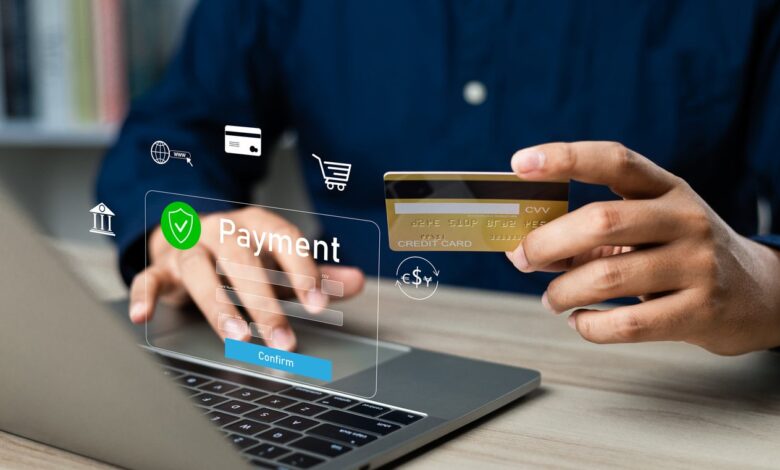Top 10 Strategies for Assessing Payment Processing Security

Ensuring payment security is essential for any company, especially in today’s digital age where criminals are constantly looking for vulnerabilities to exploit. With the rise of real-time payments, cybercriminals have more opportunities to target businesses and consumers.
Customers expect a secure and user-friendly payment experience when shopping online. Failure to provide a secure environment can lead to cart abandonment, revenue loss, and damage to a company’s reputation. To give your customers the best experience possible, it’s crucial to understand online payment security.
Current Trends in Payment Processing Security
In recent years, the payment processing landscape has evolved significantly. Companies no longer store credit card information on their own servers to avoid becoming targets for hackers.
Payment Gateways vs. Payment Processors
Today, businesses use payment gateways as intermediaries between them and customers’ banks. By integrating API management gateways, companies can add an extra layer of security for customers. Credit card information is never stored on the merchant’s servers but is processed securely through APIs.
Payment processors facilitate secure transactions and offer a seamless checkout experience for customers, enhancing consumer trust.
Payment gateways focus on protecting sensitive information through encryption and tokenization, ensuring secure payment data transmission. Depending on the website, a payment gateway can be integrated into the site’s infrastructure or redirect users to a third-party gateway.
Payment processors handle the actual transaction, authorizing and settling payments securely.
Payment Methods
With the emergence of digital payment options, consumers can now choose from various payment methods, including credit cards, debit cards, wire transfers, mobile wallets, and eChecks. Each method offers different security features to protect customer data.
Merchants must ensure that their payment systems are secure across all payment methods to protect sensitive financial and personal data.
Benefits of Secure Payment Methods
Secure payment methods protect both customers and businesses by implementing encryption, fraud detection systems, tokenization, and multi-factor authentication.
For businesses, secure payment practices can reduce losses from fraud, build customer trust, and ensure compliance with industry standards like PCI DSS.
Financial Data and Payment Security
Financial data, including credit card numbers and personal information, is a prime target for cybercriminals due to its value and vulnerability. Safeguarding this information during transactions is crucial to prevent data breaches and financial losses.
Advancements in payment security, such as PCI-certified encryption and parameterized database queries, have helped mitigate risks associated with data breaches. It is essential for companies to prioritize payment security to protect customer data and maintain trust.
By staying informed about the latest trends and technologies in payment security, businesses can ensure a safe and secure payment experience for their customers.
This ensures that any vulnerabilities within the app or its dependencies are isolated and cannot be exploited by hackers. Regularly scanning and updating these containers is crucial for maintaining payment processing security.
7. Monitor for suspicious activity
Monitoring for suspicious activity is essential for preventing fraud and protecting sensitive data. By analyzing transaction patterns and monitoring for any anomalies, businesses can quickly identify and respond to potential threats.
Implementing real-time monitoring tools can help businesses detect and respond to suspicious activity as it happens. These tools can alert you to any unusual behavior, such as multiple failed login attempts or large transactions outside of typical spending patterns.
Having a dedicated team or service to monitor for suspicious activity can help businesses stay one step ahead of cyber criminals and protect their payment processing security.
8. Keep customer data secure
Protecting customer data is crucial for maintaining payment processing security. Businesses must ensure that all customer information is stored securely and that access to this data is restricted to authorized personnel only.
Implementing strong access controls and encryption measures can help businesses protect customer data from unauthorized access. By limiting access to sensitive information and encrypting data at rest and in transit, businesses can reduce the risk of data breaches and protect customer privacy.
Regularly auditing and updating security measures can help businesses stay on top of any potential vulnerabilities and ensure that customer data remains secure.
9. Train employees on security best practices
Employee training is crucial for maintaining payment processing security. Businesses must ensure that all employees are educated on security best practices and understand their role in protecting sensitive information.
Training employees on how to recognize and respond to security threats can help prevent data breaches and protect payment processing security. By educating employees on the importance of data security and providing regular training sessions, businesses can create a culture of security awareness within their organization.
Regularly updating training programs to reflect the latest security threats and best practices can help businesses stay ahead of cyber criminals and protect their payment processing security.
10. Stay informed and adapt to new threats
Staying informed about the latest security threats and trends is essential for maintaining payment processing security. Businesses must stay up to date on new vulnerabilities and attack methods to protect against evolving cyber threats.
By staying informed and adapting to new threats, businesses can proactively enhance their security measures and protect their payment processing systems from potential attacks. Regularly reviewing and updating security protocols can help businesses stay one step ahead of cyber criminals and reduce the risk of data breaches.
By following these best practices and continuously monitoring and updating your payment processing security measures, you can help protect your business from cyber threats and build trust with your customers. Remember, payment security is an ongoing process that requires constant vigilance and adaptation to new threats. By investing in robust security measures and staying informed about the latest trends in payment processing security, you can ensure that your business remains secure and your customers’ sensitive information is protected.
Ensuring the Security of Payment Systems: Best Practices
Securing your payment system is crucial to protect your business and customers from potential threats. If containers are not properly secured, they can become a weak point for hackers to exploit, putting your payment system at risk. By regularly checking these containers for security issues, you can identify and fix problems early, safeguarding your payment data.
Fraud detection is another essential measure to protect e-commerce platforms and users from financial loss and data breaches. Modern fraud detection systems utilize advanced technologies like machine learning and anomaly detection to analyze transaction data and identify patterns associated with fraud.
Implementing two-factor or multi-factor authentication adds an extra layer of security by requiring more than just a password to log in. This makes it harder for hackers to gain unauthorized access to accounts and sensitive information.
Utilizing card verification value (CVV) is crucial for online and phone payments, as it confirms that the purchaser has a physical card, reducing the risk of fraud. Real-time verification processes immediately confirm the CVV and address information during transactions, helping businesses detect and prevent suspicious activity.
3D Secure 2.0 is an advanced security tool that enhances online payment security by verifying the identity of the cardholder. It shares secure transaction information with the card’s bank to determine the safety of the payment, adding an extra layer of protection against fraudulent transactions.
Overall, payment processing security is essential for businesses to protect customer data and demonstrate a commitment to security. Implementing robust security measures, following PCI compliance, and optimizing payment systems for seamless transactions are key steps to enhance customer trust and retention.
FAQs:
1. Why is payment security important for businesses?
Ensuring payment security is vital for protecting customer data and maintaining trust with clients.
2. How can businesses enhance payment security?
By implementing measures like fraud detection, authentication protocols, CVV verification, and utilizing advanced security tools like 3D Secure 2.0.
3. What role does PCI compliance play in payment security?
PCI compliance helps businesses adhere to industry standards and secure their payment systems against potential data breaches.
4. How does two-factor authentication improve account security?
Two-factor authentication adds an extra layer of security by requiring users to provide additional authentication factors beyond just a password.
5. Why is real-time verification important for online transactions?
Real-time verification processes help businesses identify and prevent fraudulent activity during transactions, safeguarding against potential financial losses. given sentence in a different way:
“The cat sat on the windowsill, watching the birds outside.”
As the birds fluttered outside, the cat perched on the windowsill, observing their movements.



